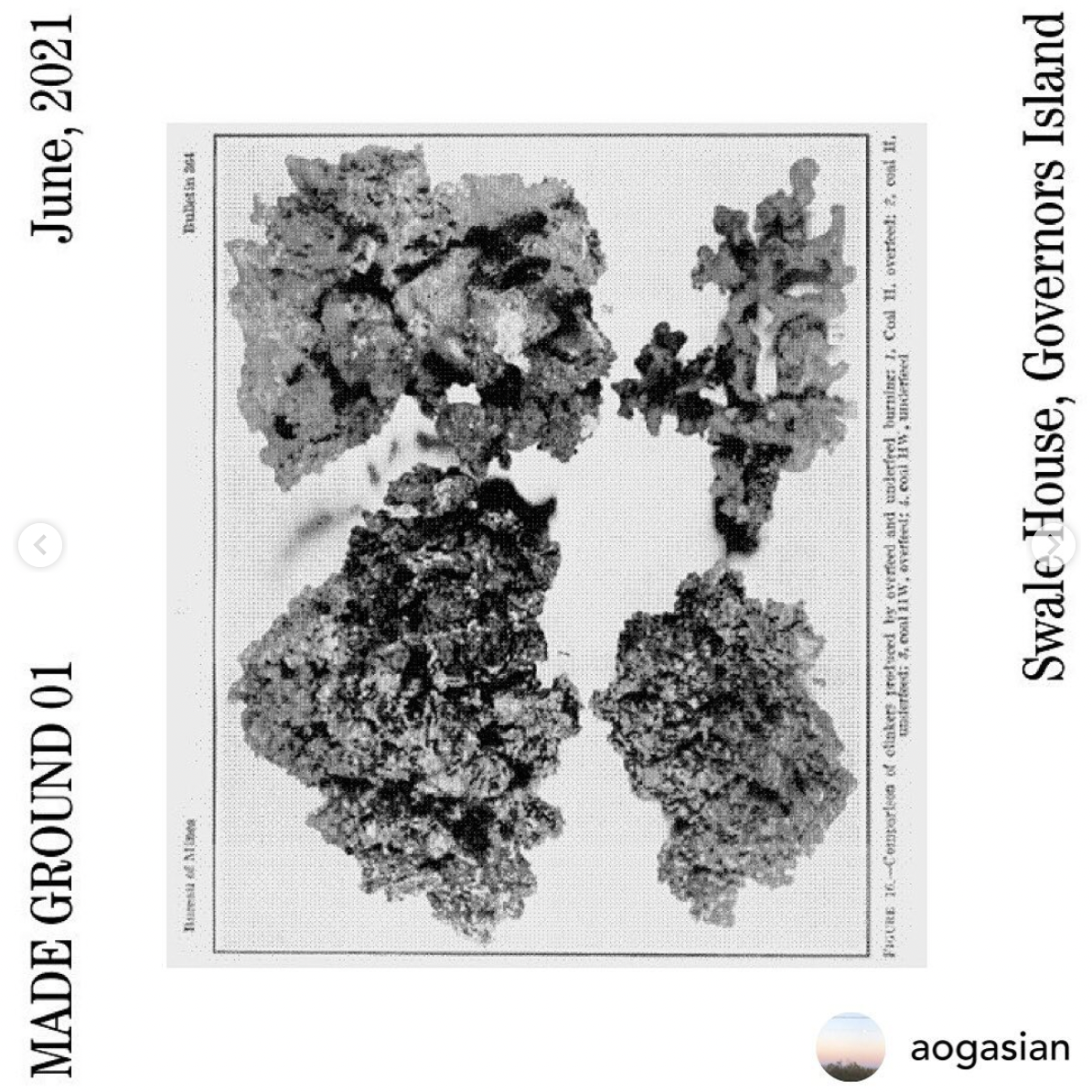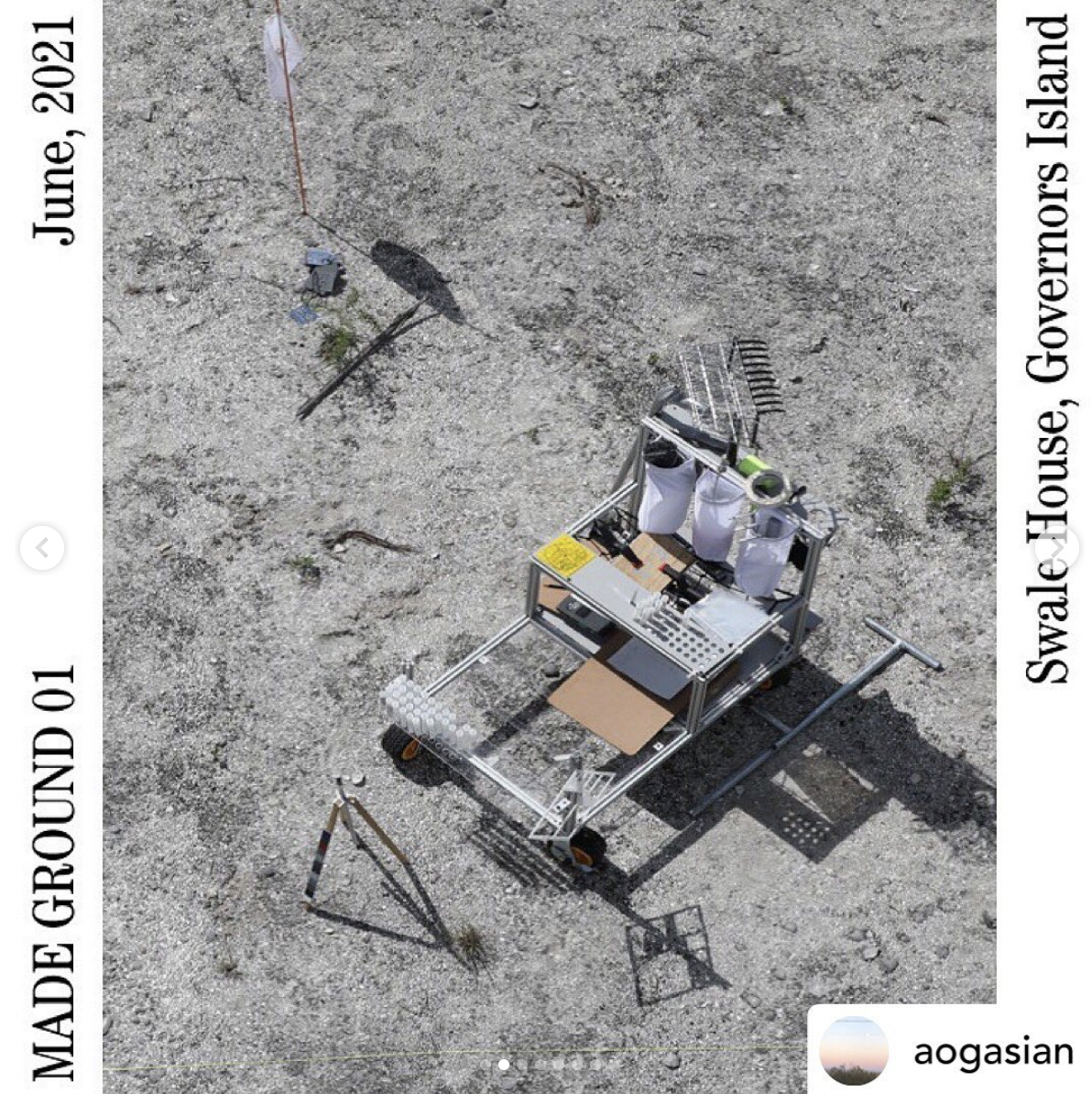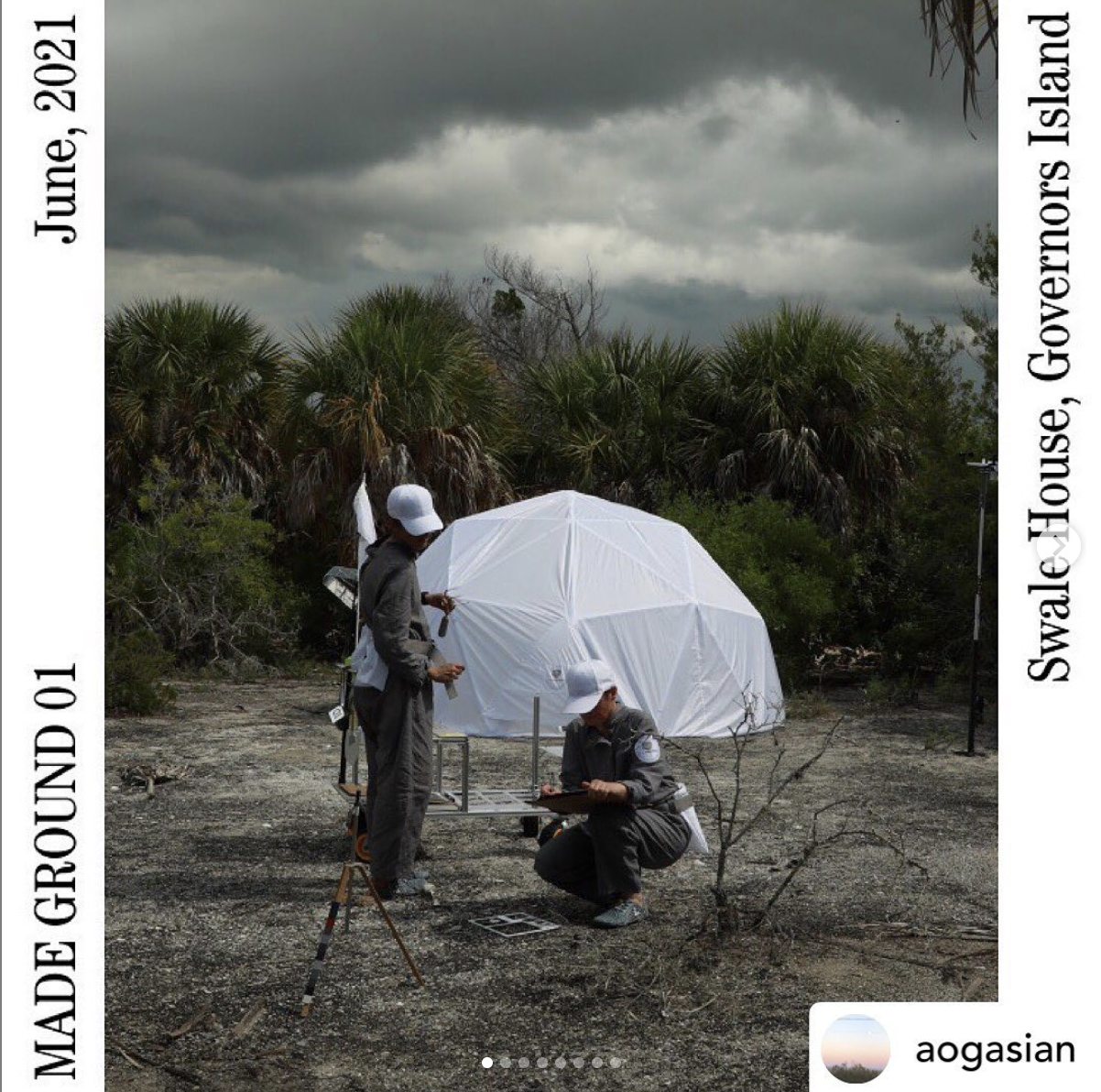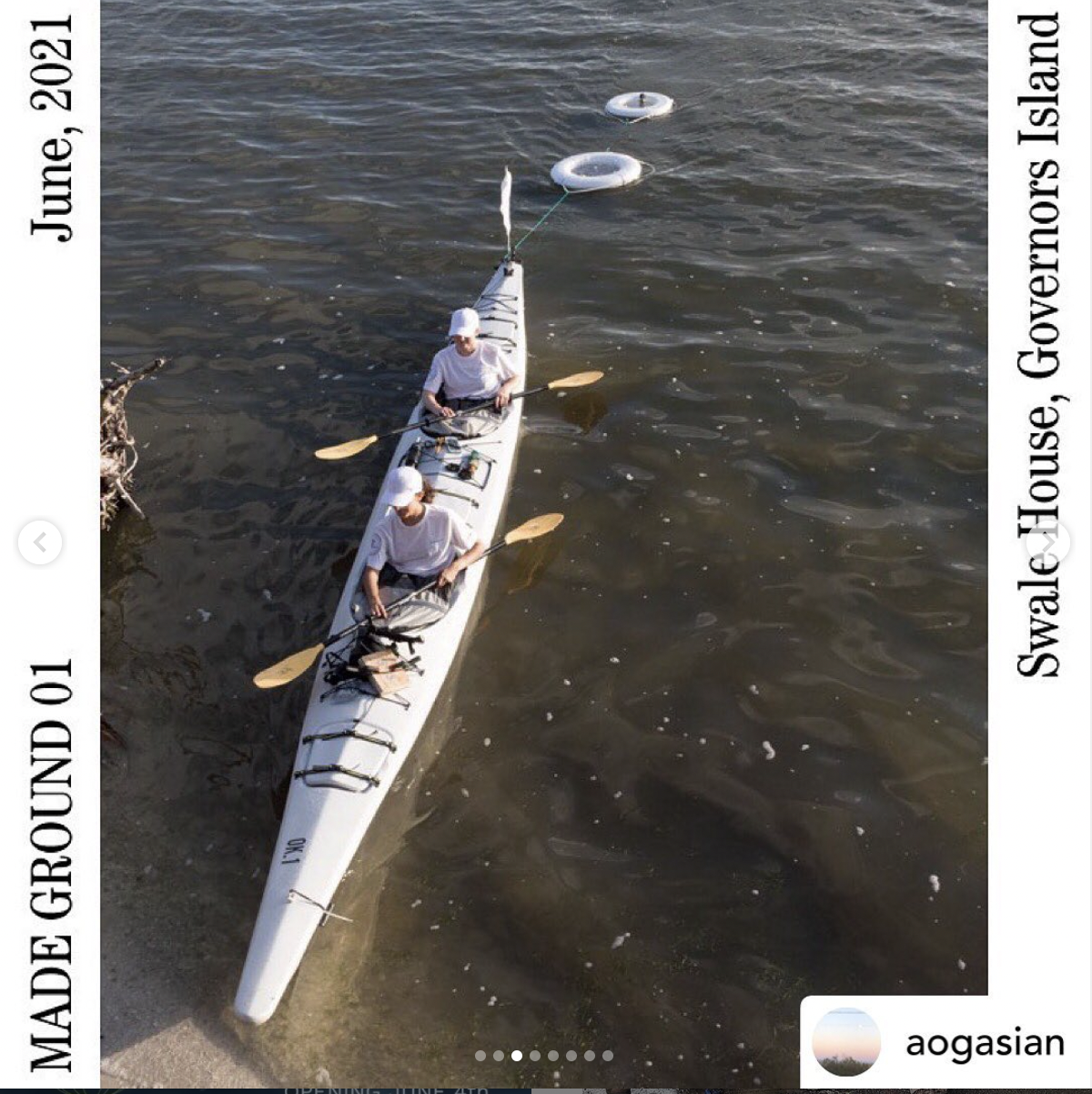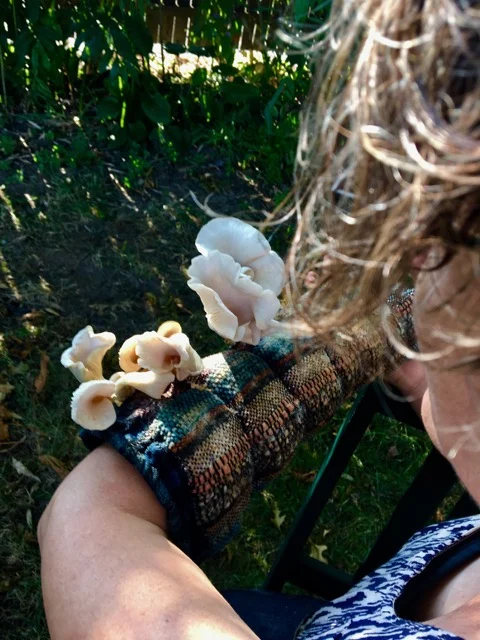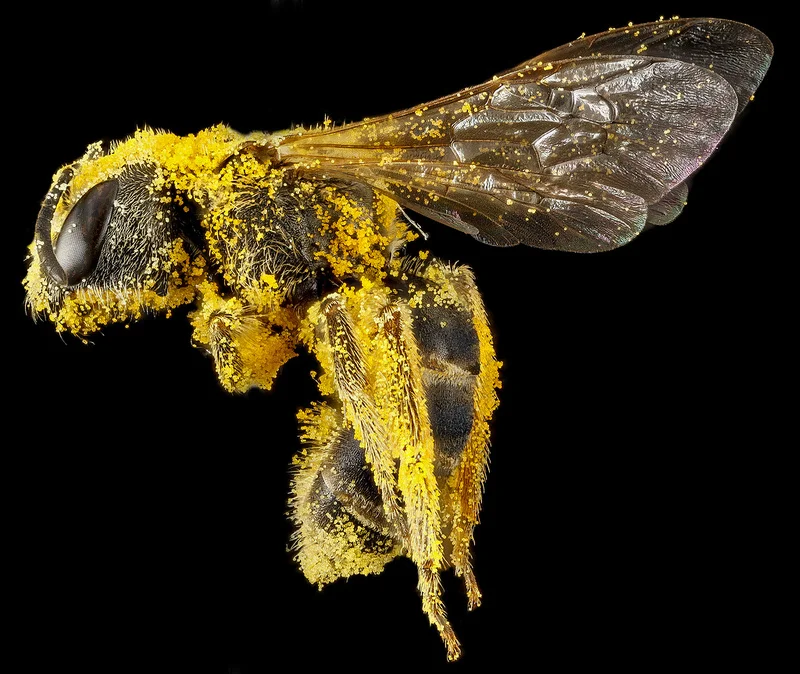RE-IMAGINING CONSERVATION: FROM THE GROUND UP
Swale House, Governor’s Island, NYC
Dates: May 5 - November 5, 2023
Open Saturdays and Sundays from 12 pm to 5 pm at Swale House on Governors Island, NYC accessible by ferry https://www.govisland.com/plan-your-visit/ferry.
Opening Reception: May 20, 2023, 1-4 pm
An informal opportunity to view the work and mingle with artists, writers, and Creature Conserve staff
Artist-Led Events: May 21, 2023, 1-4 pm
Creature Conserve is delighted to partner with Swale House and the Urban Soils Institute to present Re-Imagining Conservation: From the Ground Up, an exhibition inviting viewers to imagine human-animal-soil interactions in ways that support healthier lives for all species.
This exhibition focuses on the role healthy soil plays in supporting a healthy ecosystem, which in turn supports healthy animals and healthy people. The artworks included in this exhibition present multiple lenses for viewing our relationships with soils, and prompts the viewer to ask: WHAT IF we imagine human-animal-soil interactions in ways that support healthier lives for all species? The exhibition includes works from 21 artists, 10 writers, and 2 performers from five countries.
Curated by Heather McMordie, Creature Conserve Arts Curator with support from Margaret Boozer (Co-Director, Art Extension Service, NYC Urban Soils Institute) and Mary Mattingly (Founder, Swale.)
Featuring artworks by Angela Baron, Chloe Bulpin, Donica Larade, Eileen Holland, Elizabeth Ellenwood, Emilie Houssart, Hayley Cranberry Small, Hernán Jourdan, Jeanne Dodds, Jenn Houle, Lee Fearnside, Lisa Schnell, Madison Woods, Mrinmayi Dalvi, Pamela Casper, Pooja Venkatachalam Kumar, Rachel Frank, Renee Crowley, Stephanie Garon, Uma Sharma
Performances by Kate Amrine, Kate Douglas
Writings by Adira Andlay, Catherine Fletcher, Catherine Raven, Derek Russell, Diana Renn, J. B. Moonstar, Juliana Roth, Mary Arnold, N Nitha Fathima, Uttama Patel, Lisa Schnell, and Susan Tacent.
SCHEDULE OF EVENTS
May 20, 2023, 1-4 pm EST: Opening Reception
May 21, 2023, 1-4 pm EST: Artist-Led Events
May 15 - 23, 2023: Rachel Frank, Artist in Residence at Swale House
June 12 - 18, 2023: Jeanne Dodds, Artist in Residence at Swale House
June 19 - 25, 2023: Emilie Houssart, Artist in Residence at Swale House
June 26 - July 2, 2023: Lisa Schnell, Artist in Residence at Swale House
August 1 - 6, 2023: Stephanie Garon, Artist in Residence at Swale House
August 27 - September 3, 2023: Kate Amrine, Artist in Residence at Swale House
September 4 - 10, 2023: Hayley Cranberry Small, Artist in Residence at Swale House
September 25 - October 8, 2023: Kate Douglas, Artist in Residence at Swale House
September 25 - October 8, 2023: Hernan Jourdan, Artist in Residence at Swale House
Imagined Futures
May 5 - 25th, 2022
Viewing: Thursday - Sunday 12-5pm
@Swale Lab: House (#11) on Governors Island
Reception: Sunday May 15th
Mark Andrew, Kevin Bright, Kim Darling, Marguerite Day, Fred Fleisher, Josh Kil, Susan Knight, Eric Hagan, Patty Harris, Cynthia Mason, Tricia McLaughlin, Eric Ondina, Zoe Reid, Walter John Rodrigues, The G-77
Swale House, 15 Nolan Park
September 4 – October 16, 2021
Opening Reception: September 11, 12 - 4pm
Attuned
Artworks in Attuned address living soil, inspired by the billions of microbes in every tablespoon of dirt which breathe in carbon dioxide and exhale oxygen. Like the dirt beneath our feet, these sculptures teeter between living being, inanimate object, and transformative process. Some incorporate plants and melting wax, others create complex shifts in our perception.
Artists: Joy Curtis, David D’Ostilio, Rachel Frank, Heidi Norton, Brian Zegeer
Curator: Julie Ann Nagle
Urban Soils Room
The Urban Soils Room houses the soil samples collected by the Natural Resources Conservation Service for the landmark New York City Reconnaissance Soil Survey. The room is an art + science collaborative installation that highlights the beauty of the soils and illustrates the essential functions that soils perform in the urban ecosystem. Originally a collaboration between soil scientist Dr. Richard Shaw and artist Margaret Boozer, the Swale iteration expands with additions from Urban Soils Institute and its Art Extension Service, including programming and a soils testing lab.
Organized by Urban Soils Institute Art Extension: Project Soils
Acts of Restoration *
Tessa Grundon
During the opening reception, Grundon will present work-in-progress in her studio at Swale House. In collaboration with Swale and Urban Soil Institute, Grundon is working with the woven fibers and dyes of hyperaccumlator and medicinal plants to create woven vessels (hassocks/tussocks) for the remediation of damaged land and waterscapes. These contain the soil, microbes, seeds and mycelium for the restoration of specific sites. She has been growing a dye and fiber garden for experimentation with Swale Food Forest and SUS.
*Braiding Sweetgrass, Robin Wall Kimmerer
The exhibitions are otherwise open by appointment:
Attuned: julieannnagle@gmail.com
Urban Soils Room: margaret@margaretboozer.com
Swale House: amandamcdc@publicartaction.net / swaleproject@gmail.com
Climate change seems to require that we adjust to the prospects of socio-ecological worlds marked by near-permanent unsettlement. We increasingly know—as the philosopher Dale Jamieson has noted—in the best possible circumstances, human life in the post-Holocene is going to take place on a dynamic, restless, and a much warmer planet. We find ourselves thrown into uncanny hybrid worlds and unsettling shifting dynamics for which we have few maps.
One response to this state of affairs from the global billionaire class is to follow Elon Musk and prepare for building Elysium on Mars.The artists and sci-art-cosmonauts Aly Ogasian and Shona Kitchen suggest a different path.Rather than making plans to jump ship, they suggest we remain in place. The changing cosmos should be explored with an appropriate sense of wonder and caution, rigor and adventure. But we should focus our energies on archiving the new uncanny spaces and alien landscapes that are erupting around the edges of the Anthropocene.
Made Ground is a remarkable act of invention, madness, and curation. Through film, photography, sound recordings, experiments, soil samples, and ultimately the construction of an archive, Ogasian and Kitchen offer us a glimpse of how to construct survival futures in a warming world.Made Ground suggests that even in the oddest produced natures, in the midst of Florida heat and space dust, life persists. And perhaps, so can we.At @swale_house on @governorsisland this weekend!!
Made Ground 01 is a free outdoor installation on Governors Island. Artwork by Aly Ogasian and Shona Kitchen and writing by Charlie Hailey. Thanks to Jessina Leonard, Han Seok You and Ji Eun Kim for photo and graphic design help!Excerpted from writing by Damian White, Rhode Island School of Design
JUNE, 2021
Saturday,12th – Sunday, 13th / 11am – 5pm
Friday, 18th / 2pm – 5pm
Saturday, 19th – Sunday, 20th / 11am – 5pm
Swale House
Nolan Park, Building 15
Governors Island
Lina Dib and Taylor Knapps, Artist and Creative Programmer, Like There is No Tomorrow Installation
Hydrachy International #5
Geheimagentur at Swale: Lecture, Workshop, and Performance
SATURDAY, AUGUST 3RD 2019
12-1:30PM
Lecture: Hamburg Port Hydrarchy: From the Free Port Baakenhöft to a Female Seafarers’ Mission
2PM-6PM
Workshop: Port of Sunken Dreams Performance
7PM-9PM
Lecture Performance: Radical Seafaring
Artists and activists all around the world set sails to reclaim the sea. They explore radical seafaring, engage in rough sea trade and experiment with rafts built from trash. It is time to extend the right to the city to the right to the port.
From their base in the port city of Hamburg the performance collective geheimagentur have worked on questions of hydrarchy and the right to the sea formany years now. Hydrarchy describes the order of the water in contrast to the order of the land, but it is also about the alliances of the many connected through the water.
Geheimagentur are coming to SWALE to explore these alliances on water in the pursuit of a Hydrarchy International. In a lecture and a performance, geheimagentur will tell of their hydrarchical endeavours and journeys – of meeting pirates, of inventing an alternative cruise ship terminal, of building a raft, of exploring the potential of micro-sea-trade between Germany and West Africa, of singing songs with seafarers and building a new port. And of always fighting for new access points to the water. The workshop “Port of Sunken Dreams” is an opportunity to share experiences, to discuss hydrarchical strategies and to claim the right for the seas together. If you suffer from land sickness, please join us.
Past Exhibitions: August 3 - October 27, 2019
Intelligent Fungi, Curiouseed
Solstalgia, Sophy Tuttle
Home Is Where the Plastic Eating Stomach Is by Elizabeth Demaray and the greater Swale House community.
Come partake in an alternative form of plastic dispossession. Between June 29th and August 19th bring your plastic waste to Swale House and it may become feed for a living sculpture that digests plastic via white rot fungi. Utilizing an open source plastomach, (plastic + stomach) design, this entity can be fed plastic waste and may help us envision a world that’s free of plastic debris. For directions on starting your own plastomach, updates on SH plastic contributions and a discussion of the emotions involved in using and disposing of plastic please visit https://wordpress.com/read/feeds/45327210/posts/2364808341
DE-Brief (Goldenrod + Chartreusia)
Sunday, October 27 at 4PM, Swale House, Nolan Park, Governor’s Island
Goldenrod meets chartreuse. Chartruisa, an embodiment of the color chartreuse, has been summoned to perform a de-install ceremony of Christy Gast's Heart of Goldenrod exhibition. It's time to harvest and hibernate these objects and their stories. Cider and singing will be included.
New York-based artist Hannah Hiaasen performs as Chartrusia.
The pending closure of dozens of 1960’s-era nuclear plants around the United States opens a new chapter of decommissioning and remediation activities that will transition these nuclear sites to new uses. Hot Ecology describes the ecological and political environment of these post-nuclear landscapes. Hot Ecology: Hudson Valley focuses with curiosity on Indian Point, a Hudson River nuclear facility located 40 miles north of New York City, by examining ecological impacts of decommissioning and remediation on surrounding communities.
Wendy Andringa is an Associate at SCAPE Landscape Architecture. Since 2005, she has been working in New York City on the creation of urban green infrastructure parks, public plazas, innovative playgrounds, higher education facilities, and multi-scalar residential green spaces and amenities. As an adjunct professor at Columbia University GSAPP, Wendy teaches the regional urban design studio, and she has also taught at SUNY ESF in Syracuse. She has served as a Board Member and Design-Build Fellow of the Gowanus Canal Conservancy, where she continues to engage in hands-on community service in Brooklyn. She is a registered Landscape Architect in New York State. Her interest in nuclear landscapes began from spending her childhood near the Hanford Nuclear Reservation along the Columbia River in Washington State, now the site of the largest high-level nuclear waste cleanup site in the nation.
Plant Portraits, Blair Butterfield
Games for Mushrooms and Non-Mushrooms
Carol Padberg leads games that encourage cross-species engagements with mycelia and the mycelial fruits we call mushrooms, while participants create new games through working in small groups.
Text-isle: Multidisciplinary Work on Governors Island
Workshop: SAT, AUG 10 AT 1 PM at the Swale House (House 15) in Nolan Park on Governors Island in NYC, Free
Wool needs teeth to bond with dye. Soaking the fibers in a mineral-rich bath is called mordanting. We’ll collect seawater from Buttermilk Channel to mordant wool. As we walk along the seawall, we’ll practice deep listening and ask, “What else needs teeth? How do we make language susceptible to environment?” While the wool soaks in seawater, we will steep in the place where sculpture and poetry meet, souse our words, and play with them.
This workshop is a part of Ensayos, a nomadic research program based in Tierra del Fuego. Ensayo #4 (Coastal Curriculum) involves research pods in Tierra del Fuego, Northern Norway, New York, and Australia. The artists, scientists, and scholars involved in each pod meet intermittently to cross-pollinate and share their experiences with archipelagic intersections of identity, history, geography, language, and law.
Christy Gast brings her Mobile Tinctorium to Governor’s Island to extract color from goldenrod (solidago sp.), a native plant in the aster family. Gast’s process includes transferring color from plants to fibers (foraging, dyeing, felting), sculptural installations, and exploratory, poetic, performative and collaborative actions. She will work on-site and host events throughout the summer, amidst an evolving exhibition of projects and processes in the studio.
Denise Milstein is a writer and researcher. She teaches at Columbia University and edits Dispatches from the Field, a publication series devoted to ethnographic material. Born in Montevideo, Uruguay, she lives and works in New York City.
Christy Gast interviewed by Bonnie Huang
B.H: I want to start off with a conversation on the work that you're doing here in the workroom Swale House.
C.G: My proposal was to do a project called Heart of Goldenrod, an evolving sculptural projected involving growing and dyeing with goldenrod, which is a native plant that offers an astounding range of colors for textile dyes--especially on wool--ranging from pale yellows to really dark greens. There's an example in one of the pieces in the room, the felt flag that is suspended from the stick in a stack of dye pots. The darker colors are derived by using iron in the dye mixture or cooking it in an iron pot. The technical term for what happens to colors when iron is introduced to the dye is “sadden,” or “saddening.”
I intended to be actually cooking dye here, but since the Parks Department doesn't allow open flames, and it takes an incredible amount of heat to make textile dyes, I shifted the focus to a more discursive workshop series. When I dye with goldenrod, the workflow is normally to use about five, dye pots made of different metals: stainless steel, cast iron, copper, aluminum, tin, and brass. If I can use an open flame and rest those pots on it, I can produce a wide range of colors using the same dyestuff. I designed some cast concrete stoves that are part of the sculptural element of the project which are highly efficient, basically small furnaces. But since the Parks Department doesn't allow open flames, and water is an issue as well on the island, as well, the project has developed towards pulling textual and textural metaphors from the dye processes and collaborating with other artists to do experimental projects that, in a more discursive way, think about those metaphors and play with them.
B.H: Could you elaborate a little bit more on maybe the different metaphors that are in specific colors that you have in mind?
C.G: The first workshop was called Felting / Feeling. We used some of the language from the wet felting process, like the term “shocking,” for example, which refers to the way the fibers are treated when they’re submerged in hot and cold water and massaged aggressively, to talk about ideas of emotion, representation, visibility, and responsibility in art. At the same time, we made some wet-felted pieces as a group. Next week with the writer Denise Milstein, we're offering a writing workshop around the idea of “mordanting,” which is the process through which a mineral molecule is introduced to the protein of the wool, which allows dye molecule to bind to the fiber and create color. The root of the word mordant has to do with biting or adding teeth. We will collect seawater from Buttermilk Channel, mordant some wool in it, and then think and write about processes of transformation. The dye color that comes out of the plants, it doesn't actually bond directly to the protein. It bonds to the mineral, without which the color transformation would not happen.
This weekend with the poet Charity Coleman, we had a program called Liberation Botany in which she performed a poetic oratory, a discourse around naming, in terms of the sort of scientific names that have been applied to plants and animals in North America.
B.H: And, I'm curious about your draw to poetry and to spoken word, and things like that. It seems like it's a large part of what you're incorporating into this project. I that you have done some performance art in the past. Could you talk a little bit about maybe what's the draw towards that for you?
C.G: In terms of performance, one of the first things that I did when I finished my undergraduate studies was to tour with the circus that was founded by a group of artists, Cloud Seeding Circus of the Performative Object. That was a formative experience for me as an artist. And in terms of poetry, at my home in upstate New York in Dutchess County, I host a poetry residency called the Sappho Room. It’s a simple room with a beautiful library of books sent by artists and writers when I first moved there, which was organized by the writer Jarrett Earnest.
The residency is about building a network, or a community, and making space for creative people to work in the house where I'm also working. I take up a lot of space as a sculptor, so I thought it would make sense to carve out a quiet space for writers, specifically queer or trans writers, a room of their own. It’s informal. There’s no application process or website. I say it’s for friends, lovers, and friends and lovers of friends and lovers. Writers come for anywhere between two and four weeks at a time and focus on their work. We eat dinner together, take walks, explore, talk about books. Having that residency in a room that's very similar to this workroom inspired me to do a more discursive project in here.
B.H: I'm curious about too, the kinds of techniques that you talked about just now that goes to the dyeing process. Did you have mentors and teachers who taught you these techniques? And also, do you approach the making process from a more traditional kind of sensibility or do you like to experiment a lot with the dyes in the work that you're doing here?
C.G: I started to do this work after I had done several projects about forests and landscapes that were more performance and film-based. I was really influenced by the writing of Donna Haraway and a book called How Forests Think by Eduardo Kohn. Rather than put the lens or the gaze on the forest or the landscape, I wanted to see how I could make work that felt more collaborative, to work with the forest. I began a long process of learning to read the forest, which meant taking walks either by myself or with other people, collecting leaves and flowers of plants that I didn't know, identifying them and beginning to understand what properties those plants have that might be, or had in the past been, used to make colors. The idea was similar in a way to John Cage's interest in mushrooms as a sort of chance operation; it was to see what I found on those walks in the forests that I was exploring in different residences that could produce colors. Through that process of dyeing wool, the plants I encountered offered a color palette that I would then use to make artworks. The forest determined the colors.
B.H: There's a lot of site-specificity that incorporated into your process. How do you look for for these environments or situations?
C.G: Mostly I end working in places through relationships that I've built in my work, or where I lived for a while, like in Utah or the Everglades in Florida. I lived in both of those places off an on. And then, based on the nature of my work, I've been invited to take part in long-term projects like Ensayos in Tierra del Fuego, which is directed by a close collaborator, Camila Marambio, who I've been working with for about 10 years.
B.H: So a lot of the work then is a response to the environment that you're living in.
C.G: In conversation with the environment that I'm living and working in, and with other people and animals and plants that are living in those places as well.
B.H: How long have you been living in Upstate New York?
C.G: Only a year.
B.H: How has living in that landscape influenced your work?
C.G: I was drawn to the region because I needed to shed the limitations of being in an urban environment and working in confined spaces. I was seeking out, already, residences that would give me an opportunity to have outdoor studio space, and I wanted to set up a permanent situation to work in that way. And I also wanted to start growing my own art supplies, which I have begun to do.
B.H: You work in a very wide range of media: video, performance, you're doing a lot of dyes, you've done soft sculptures. How do you decide on the right form for a work?
C.G: I would say that the work tells me what the form needs to be. There's a conversation between the content and the material that happens in my head or physically in the studio, until it just feels right. And I think of the exhibition space, the travel requirements, the production requirements of the work. If I have to take a sculpture to a location to make a film, then I have to make sure that I can physically do that and so that might influence the form that it takes. So it might be collapsible, might be made of a textile, that kind of thing.
B.H: Is there anything that you wouldn't use? I'm just curious.
C.G: I'm not exactly sure if there is anything I wouldn't do. I mean, I wouldn't do anything that feels unethical.
B.H: [Laughs] That's very fair. What does your research look like before and during the creation of a piece? Do you do a lot of sketching?
C.G: It looks like a lot of printouts, photographs tacked to the wall, big pieces of paper with a lot of writing and quick sketches on them. Piles of books on the table.
B.H: And working with so many collaborators, whether it's the poets or more on a scientific level, what is it like to work with others, especially people who might not be visual artists?
C.G: It's a really wonderful process because everyone's creative, right? Scientists are creative, writers are creative, curators are creative. And we hold that creativity in different ways and in different forms. In the collaborative process, we inhabit each other's worlds for a short period of time, which really sticks with you. And then there are a lot of shared Google Docs.
B.H: Do you have a specific audience in mind when you're making work? A group that you want to speak to? I'm asking because you make work in response to an environment, and I'm wondering if that's the same for audiences.
C.G: That's an interesting question because the audience that I make the work for is the people that I'm talking to; people, animals, plants in the environment that I'm thinking with. And if there's a venue like this where I'm invited to do a project, there will be a certain audience that’s drawn to the venue.
B.H: You said that your work is for the people that you're making it with, or the animals and the environment that you're making it about. How does that work?
C.G: Sometimes animals are in the audience, to be honest, like the scent pieces that have to do with the beaver.
B.H: Yeah! I really liked that. [laughs] Oh, and that makes me want to ask—I thought that work had a sense of whimsical, almost fantasy playfulness embedded in it. There was another video with a performer kind of...acting as a mermaid?
C.G: Oh yeah, uh-huh. Yeah.
B.H: I thought those are really wonderful kind of elements of your work, the playfulness in there. Is that something that you try to instill in it or does it just kind of happen?
C.G: I just think it's important to leave space for magic to happen, not to overly script the outcome of the work. And, so, things like the merperson and the beaver work can only happen when you leave the door open for the unexpected.
B.H: I was interested, too, in how a lot of these works you’re traveling and looking at places and making work through a cross-pollinated lens with environmental issues and things like that. I'm wondering how do you engage with immigration or human migration in your work?
C.G: That's a really good question. I think with a lot of the work that I do that has to do with landscape and the environment, the absence of people is really important. And that absence in a lot of cases has to do with how we understand wilderness in the United States, which I see as a manufactured emptiness resulting from settler colonialism.
B.H: Can you elaborate a little bit more on the manufacturing of wilderness?
C.G: The Wilderness Act defines the meaning of wilderness in terms of federal land. It states that wilderness is “untrammeled by man.” Untrammeled means that wildernesses are spaces that are not maintained or used by humans. That act was passed in the mid-twentieth century and reflects an understanding of those places at that time. If you go back a hundred years or more, to the westward expansion of the United States, the “untrammeled” appearance of places we refer to as wilderness are the result of military and capitalistic pressure on Indigenous people, both passive and aggressive. Disease, military and social campaigns. But in the 15th century, before colonization, forests in the Americas were managed by people for people on a very, very broad scale that is almost invisible to us today, because the scale of management was so different.
B.H: I actually read a little bit about that, in the book 1491—
C.G: Yes, I read it too.
B.H: The part that struck me was when they were talking about how the prairies as we think about them now were heavily managed with fire and—yeah I guess that really makes you reconsider what's considered wilderness especially on a governmental level. Does this shift when you're making work outside of the United States? Or like in the Americas, in general? When you make work in Europe, do you have to deal with the same kind of thought process in regards to those human-nature interactions?
C.G: Yeah, definitely. The project Vi ser på korn på Ruene (Hva skal kyrne f ores med?) that I recently did in Norway, although it was specific to one farmer and his fields in Skiptvet, also connected to global trade because this farmer was trying to make a feed mix for his cows that didn't involve soy. And the soy that was mandated by the government to be included in the feed in order to to get the right nutritional content for the dairy cows producing organic, local milk was imported from Brazil, where the Amazon is cut down so that multinational corporations can grow soy. That was a major part of the conversation we were having with the farmer and with the members of the community who came to the field to draw the plants that were being grown--the experimental mixture of grains and legumes meant to replace the imported soy. The story of a place is different in every place. But really—nothing is so local.
B.H: Everything wraps up on a more global scale, I guess. You mentioned earlier that although there aren’t always people present in your work, people are still implied in the space--kind of how we talked about people, or the lack of people, being implied in wilderness spaces. I think that's how I was interpreting the lack of people and faces in your work.
C.G: True, there aren't that many faces in my work. I’m thinking about, for example, the exhibition Inholdings, which focused on a former missile base in the Everglades. The work told the story of change in a landscape over time: deforestation, agriculture, the discourse around invasive species, ecological restoration, and the reality of the Cold War in that place, simply through the juxtaposition of images of plants that were screen printed onto the body of a life-sized replica of a Nike missile. There were clearly a lot of people involved in producing that reality: the current scientists and land managers who are trying to remove the invasive species, the people who worked on the military base, the farmers before them, indigenous people before the farmers. What I'm representing is the evidence of those stories that the plants witnessed, or are artifacts of—living artifacts of.
B.H: When you have work with all this research that goes into it, does that get presented along with the work in some way? Do you write a wall text that usually goes with it or is it pretty open?
C.G: There's usually a press release or something with a condensed version of the story, but I think that people can come into a space and encounter an artwork without the didactic text to help them understand how to think about it.
B.H: To wrap up, tell me a little bit about what's happening in the future, in regards to this space, or other projects that you have going on?
C.G: I'll have a piece in an exhibition that's organized by the River Valley Arts Collective in Catskill, New York in September. And Ensayos, the collective that I'm a part of, we're doing a collaborative project in Brisbane, in Australia at Milani Gallery, that will involve an expedition up the coast. Research and singing and scuba diving, and...
B.H: The whole shebang?
C.G: The whole shebang!
Curiouseed at Swale House
Intelligent Fungi is a three month research, exhibition and workshop series presented by Curiouseed to celebrate the fungal wisdoms and learn from fungi, our greatest teachers, to build, nourish, and heal. The series invites the public to get inspired by these most under-appreciated organisms and deepen nature connections through exhibitions, workshops and residency research projects. Visitors will learn about the critical roles fungi play in earth’s life support system and get hands-on with fungi to restore contaminated water, experiment with biofabrication, and survey the mushroom species on Governors Island. Intelligent Fungi Series will be hosted in Swale House, Nolan Park 15, on Saturdays and Sundays from August through October 2019.




